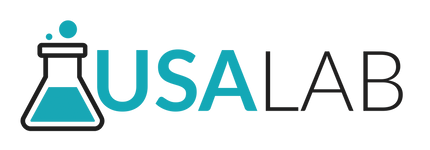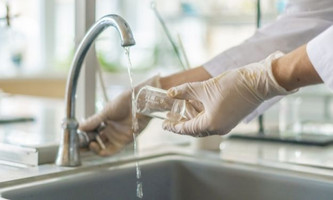How To Clean Lab Glassware | How to Clean Beakers
Posted by USA Lab Equipment on Jul 28th 2021
Glassware is the primary tool for conducting assessments in a lab environment. However, if you perform clinical procedures properly, everything in the lab will be sterile and clean. Each piece of labware requires a different cleaning procedure. Yet, with a few guidelines to follow (like how to clean beakers, for example) it will not take long for you to learn how to properly clean lab glassware.
General Protocol for All Glassware
Cleaning procedures are similar for the different types of glassware. When cleaning a beaker, spatula, or other reusable glassware, use an organic solvent such as ethanol or acetone to eliminate any residue.
Next, use warm soapy water and scrub the inside of the glass with a brush. After brushing, you can pour the wastewater down the sink. To avoid creating harsh water stains, use deionized water to clean off the remaining soap suds.
Clean more rigorously if a clear sheet is not produced by the deionized water when poured through glassware. To accelerate the drying process, use acetone, then dispose of any residuals to an organic waste container.
Effectively Cleaning Special Glassware
For the most part, each step of how to properly clean specialty lab glassware such as burets, pipets, and volumetric flasks is similar to other types. To begin, you clean with warm soapy water and rinse with tap water—same as before. Then you will rinse three to four times with deionized water to thoroughly reach all areas in the glass.
Large glasswares like burets require additional rinses for effective cleaning. Once the deionized water has produced a transparent sheet, use the acetone for drying, then dispose of it with the organic waste.
Additional Tips for Clean Glassware
Some solutions are affected by water, in which case you would use your current solution to remove the water. A triple rinse with the reagent removes the acetone or ethanol as well.
Ground glass joints can be de-greased by wiping with a specialty task wipe soaked in acetone or hexane. Perform de-greasing under the hood vent to prevent yourself from breathing in lab chemicals.
Be sure to remove stopcocks and stoppers when they are not in use, so they don’t “freeze” in place. Laboratory glassware suppliers will remind you never to dry glassware with forced air or a paper towel. Doing so may add fibers or impurities to the glass.
For air-drying, let the glassware sit on a shelf. Then, if it’s going back to the stockroom, use a solvent to expedite the drying process.

